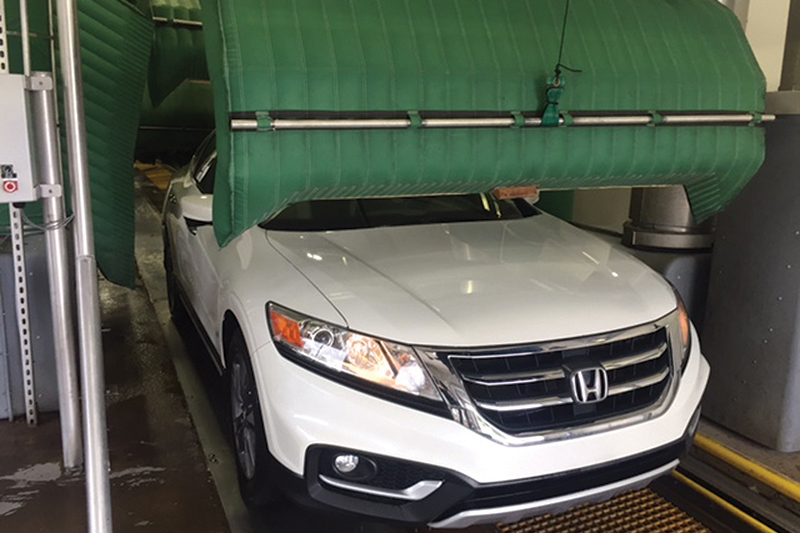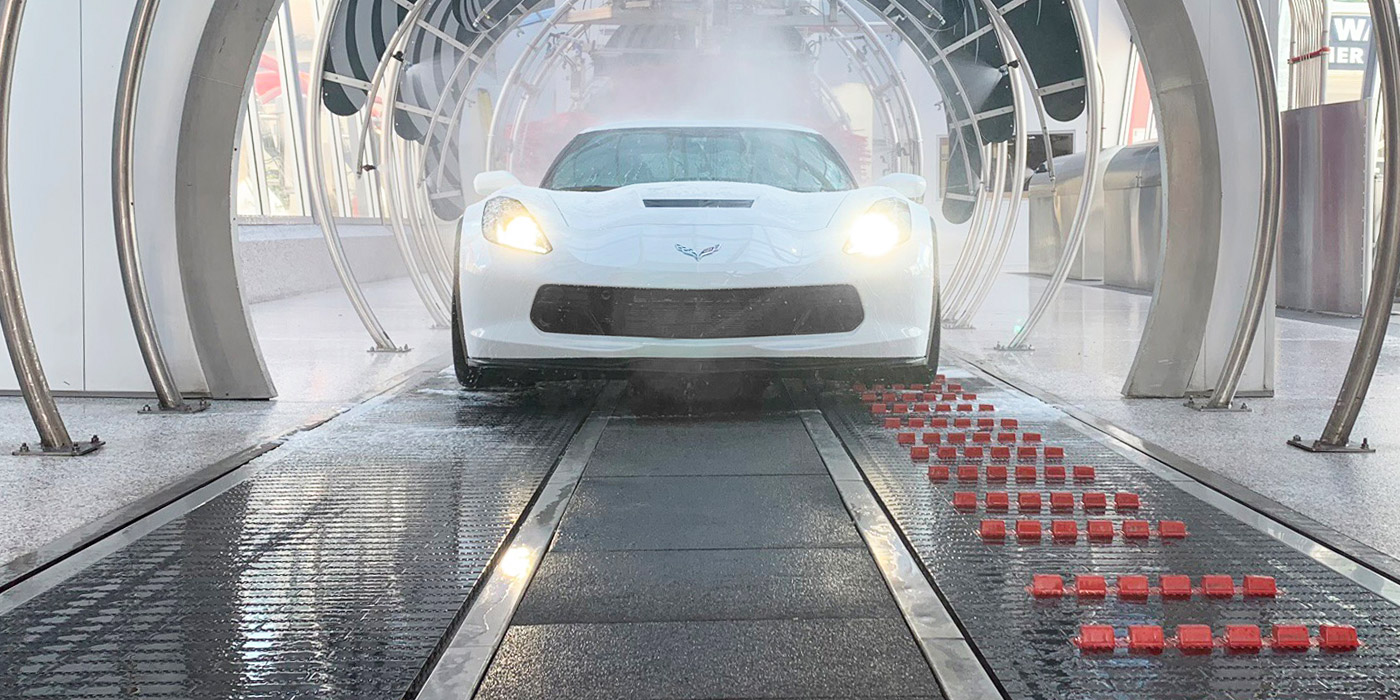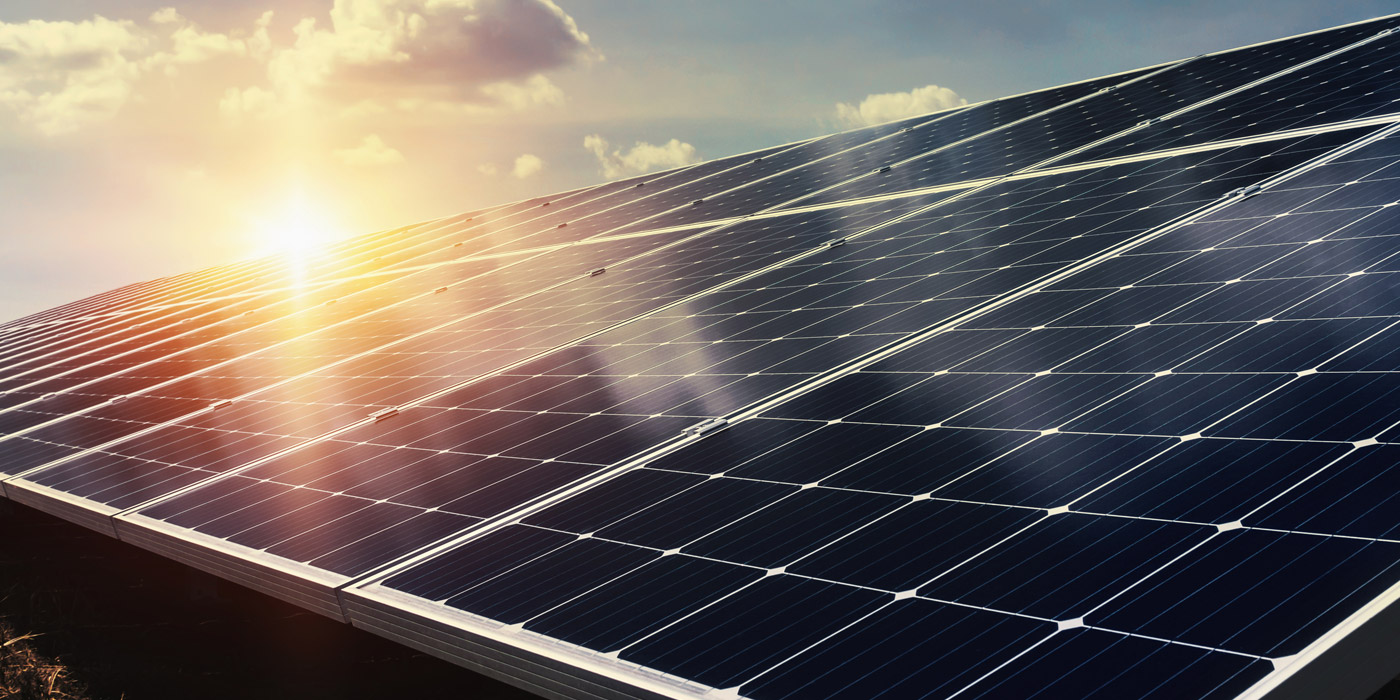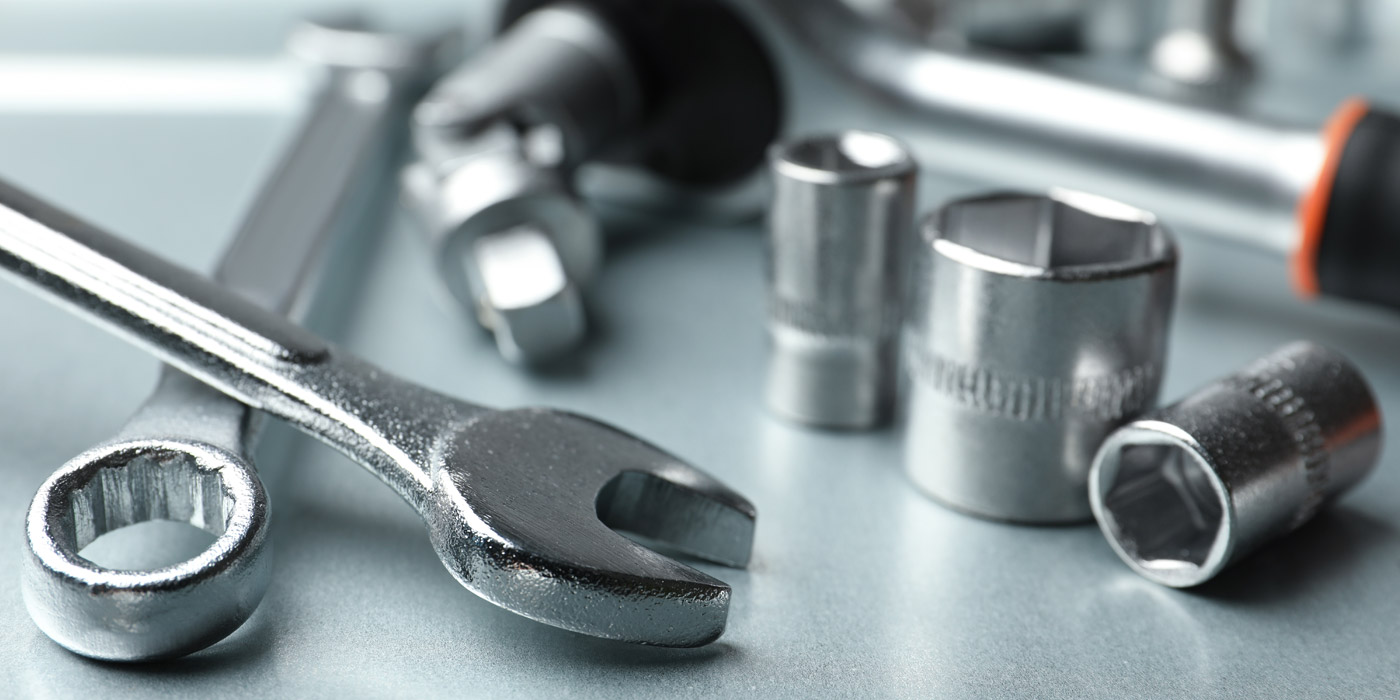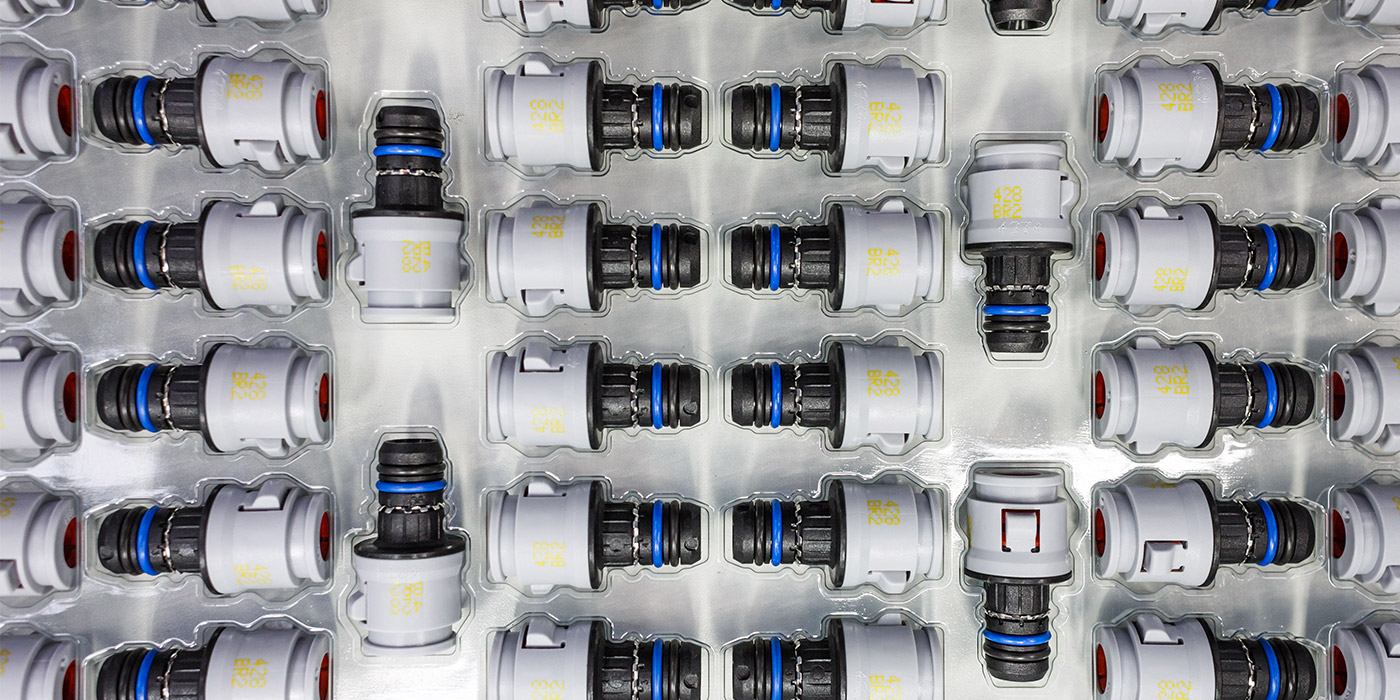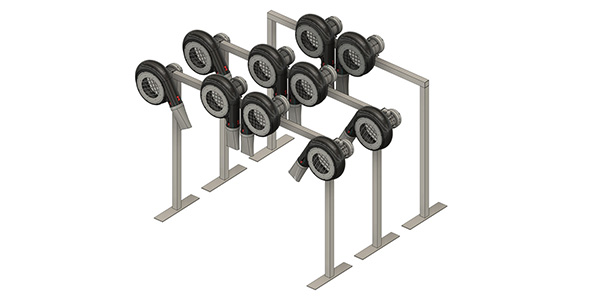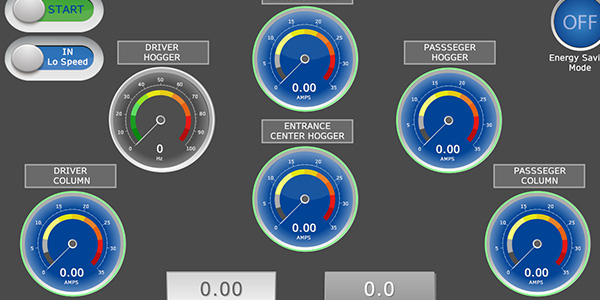Express operators and their customers can agree that thoroughly drying a vehicle surface via carwash dryers is massively important. Dryer performance ends up being one of the most important factors when customers judge a carwash’s performance and final results. A dry surface can equal excellent service, but a soggy vehicle will frequently frustrate paying customers and leave spots on otherwise clean paint.
In order to prevent spotting and ultimately satisfy every customer, wash operators and managers must regularly work to fine-tune their dryer equipment. Only by following all the recommended upkeep steps can a business guarantee maximum performance and realize the added benefit of minimizing energy waste. Here, experts indicate that proper dryer installation should be a big focus, and they share other operator best practices aimed at efficiently drying vehicles.
Fine-tuning a system
Since dryer systems are so important, there are many factors to consider when fine-tuning their operation. First, the airflow from the dryers’ blowers should always provide adequate coverage of vehicle surfaces, according to Cheryl Dobie with Aerodry Systems LLC. An owner can observe the water movement on a vehicle and then make adjustments to the outlet nozzles to improve results. Other important general housekeeping steps can include removing any obstructions to either the inlet or outlet of the blowers. This will ensure optimum airflow for the system’s specific type of fan.
Archie Johnson with The Dryer Pros suggests that operators ensure the dryer equipment is sized properly to meet results expectations. An oversized or inefficient dryer wastes energy, and an undersized system usually produces poor performance. As noted, unsatisfactory dryer results can lead to a loss of business.
As to the needed space for a dryer system, Johnson states that the area needed depends on several factors. “A progressive-type dryer that has multiple arches can take up 15 feet to 25 feet or more, while a single-arch system can require as little as three feet to four feet. There are also compact dryers available that have multiple air producers in a small space,” he says.
Richard Flores, president of Proto-Vest Inc., notes that each dryer system’s design is unique. As a result, the space required for any installations should be considered semi-custom. Once a carwash has established its dryer space allocation, strong consideration should be given to the manufacturer with custom-build capabilities that can ensure the ideal dryer for a wash’s needs.
Flores says having balanced chemicals in a wash will significantly improve drying results as well. Unbalanced pH levels — such as having too much alkaline in the wash process — will make water tend to lay flat and sheet instead of beading. This beading is needed to allow for improved drying results. Thus, an owner should consult with his or her regional supplier to assist in making sure the chemical system is properly pH-balanced. Using the right chemical levels in the wash process will allow for the driest vehicles.
Related: Fine-tuning chemistry delivery
Finally, operators should ensure all dryer intake areas are free of debris, states Arthur Stephens, president of International Drying Corp. On centrifugal-style drying systems, the impeller must be kept clean to ensure proper performance. Also essential is the proper placement of drying systems, as crosswinds created by the producers can generate turbulence and result in the water backing up. “You want to make sure the water flows in a continuous manner; if the water stops moving, the inertia needed to restart it causes a loss of efficiency in the drying system,” Stephens says.
Other best practices
Taking conveyor speeds into consideration is a dryer best practice revealed by Johnson. Carwash dryers must be sized for acceptable performance at a given conveyor speed. This means the dryer’s horsepower and airflow must be determined to do an acceptable job at the given conveyor speed. If the conveyor speed is too fast, water will be left behind. If the speed is too slow, volume is reduced, which will hurt the business’ bottom-line.
Dobie’s list of carwash dryer best practices includes following preventive maintenance steps as recommended by the manufacturer. Regularly completing all required tasks will ensure proper operation of the blowers and guard against downtime.
Flores agrees, adding, “Regular maintenance is crucial. An area to pay particular attention to is the inlet region, which when blocked can create many adverse effects on the dryer’s operation. To keep the dryer running at peak performance, it is important to clean this area often while inspecting the impeller(s), looking for any buildup that could impact the impeller’s maximum performance.”
One best practice for a carwash owner selecting a dryer system is to remember local noise statutes. Stephens notes that one area in carwash dryer development that has been looked at with great importance is noise or sound requirements. It is an important factor for an operator to consider as more and more towns are regulating the sound levels that are allowed for operating carwashes.
Related: The importance of sound suppression in dryers
Minimizing energy waste
Automatic drying systems are typically the largest consumer of energy when it comes to the equipment in a modern carwash, Stephens states. That said, both variable frequency drives (VFDs) and soft start systems can reduce the start-up surges in energy required to bring a dryer system up to full speed and pressure. Ramping the motor up as opposed to a hard start lowers the energy surge. Also, air gates have come into play in recent years. These gates allow the fan to “free wheel” or start up without a load until they are opened.
Dobie also notes that the increased use of VFDs has positively affected dryer energy consumption. As the VFDs reduce the in-rush current at start-up, they effectively lessen the initial amp draw and the energy rates charged by utility companies. In addition, a “look-back” timer function in the control panel allows a dryer to slow or shut down between vehicles instead of running at full load continuously. In this instance, the programmable options function as determined by energy calculations.
VFDs and airflow systems have become widely popular in carwashes because, during start-up, dryers use around three times more energy than while running, according to Johnson. VFDs and airflow control systems that block airflow when no vehicle is present not only save energy but also reduce the wear and tear on dryer equipment.
“Most dryer manufacturers have energy-saving dryer systems that make a difference,” Johnson says. “The basic thing operators must remember is to maintain a balance of run time and the number of start-ups. A dryer shouldn’t run when no vehicle is present, yet not start up for each vehicle.”
Another important consideration for energy efficiency is dryer system design. Flores states that, when traditionally comparing drying systems, many tend to use the cubic feet per minute (CFMs) produced by a dryer as a measurement of dryer capability. However, just because a larger volume of air is being moved, it does not necessarily equate to a dryer vehicle. Some dryers move a lot of CFMs but without the proper pressure behind operation. Thus, this method of drying can require greater horsepower in order to achieve favorable results.
“When designed properly, a dryer can deliver air harder, faster and with pinpoint accuracy to actually strip the water off the vehicle,” Flores continues. “This actually can require less horsepower and provide an overall dryer vehicle surface, making the dryer more efficient.”
Working with distributors
Before any operator chooses a dryer, he or she needs to consult with an expert in the field or a dryer manufacturer, according to Johnson. A dryer distributor should fully understand an operator’s needs before recommending a specific dryer for a carwash location.
Dobie states that manufacturers today have a responsibility to provide blowers and motors that are suitable for a carwash. Not all motors are suitable; for instance, she adds, the harsh environment requires Totally Enclosed (TEFC) motors with sealed bearings to prevent moisture and dust from penetrating the motor. In addition, the dryer system needs to be configured with the customer’s goals in mind while taking into account the process preceding the drying bay. “The appearance of the finished vehicle is greatly determined by the wash and rinse, then further complemented by a properly sized drying system,” explains Dobie.
Designing tunnels with ample drip space coupled with analyzing line speeds are two important factors Flores recognizes. Smart configuration of space allows a vehicle to begin the wash process while the previous one is drying. Analyzing tunnel length and the placement of dryers will provide a guide for cycle times throughout the carwash process, including drying.
Stephens notes that working with a distributor can help an operator with proper placement and sizing of the drying system along with the utilization of flash dryers. Also, distributors can help educate the carwash owner on the proper line speed for a tunnel conveyor or set proper expectations for an in-bay dryer system. That said, in-bay washes that utilize free-standing dryers have the disadvantage of not being able to control the speed of the vehicle passing through.
Efficiency and results
Why is dryer efficiency — as it relates to both wash results and energy usage — so important in today’s carwash market? Johnson explains that express carwashes that were once a small part of the business now dominate the industry. To stay competitive, operators must quickly get vehicles clean and dry.
“Customers expect and are entitled to a quality product — in this case, a clean and dry vehicle,” Dobie says. “As the industry moves toward the express carwash model minus attendants at service completion, drying quality becomes key.”
Stephens notes that soaring energy costs mean annual expenses can be enormous, but carwash operators are also fighting high wage costs. These costs are stimulated further by the rising minimum wage, so efficient drying is essential to reduce the amount of labor needed to dry a vehicle. Especially with the influx of $3 and similarly priced washes, mounting labor costs can make or break the profitability of a carwash, requiring advanced machinery to fill the reduced labor gap.
Sam Albertson is a freelance contributor.

